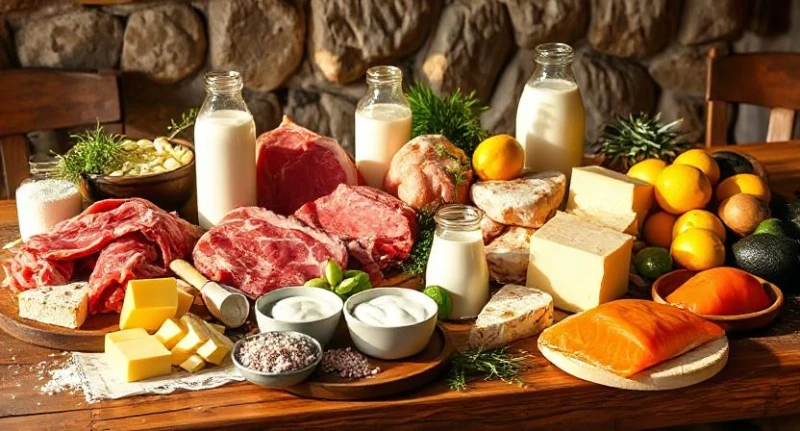
Carnivore-ish Diet
While a carnivore diet focuses on animal products and excludes plants and carbohydrates completely, a carnivore-ish diet focuses on animal products and includes a few other low-sugar options. In both versions, nutrients come mainly from protein and fat.
-
Choose whole foods (minimally processed or unprocessed foods)
-
Focus on animal products
-
Choose red meat, butter, eggs and some organ meats above all else
-
Think nutrient dense
-
Buy local, grass-fed animal products where possible
- Eliminate processed foods
- Avoid alcohol
- Cut out sweet fruits
- Steer clear of grains and starchy vegetables that grow below ground
- Avoid sodas/pop/fizzy drinks
- Be mindful of hidden sugars
- Include bone broth
- Include unpasturised fermented foods
- Drink water to avoid constipation when started out on a meat-heavy diet
- Consider intermittent fasting for health benefits
Why eat an animal-heavy diet?
An excellent article about the basics of the carnivore diet by Ruled Me offers this simple explanation:
“Plants are not optimal for human health because they contain compounds designed to harm animals.” While plants, “contain compounds that can provoke nutrient deficiencies and immune reactions,” meat is not toxic to the human body (even though the animals we eat tend to eat plants). “Instead, you get highly bioavailable micronutrients, healthy fats, and complete proteins without excess carbs.”
That said, people who are not healing a condition can be fairly lenient. A sensible idea, to figure out what works best for you, is to start with a strict carnivore diet, then add in more foods and see how they affect you. That way you’ll find what works best for you on a short- and long-term basis. Whatever you choose, animal-based is super healthy!
What about dairy on a carnivore-ish diet?
Many proponents of a carnivore diet recommend limiting dairy foods. Only products that are low in lactose (milk sugar) such as butter and hard cheeses are recommended – but even then in small amounts. Lots of people, especially those trying to heal autoimmune conditions, reduce inflammation, improve chronic digestive issues and lose weight fast, find that eliminating dairy foods is highly beneficial.
On a carnivore-ish diet, dairy products are quite acceptable but I’d recommend sticking to heavy or extra thick cream, hard cheeses and grass-fed butter. I find that too much cream affects my weight loss but I don’t seem to be affected by the amount of butter I consume.
What about grass fed and grass finished meat?
Personally I think: just eat the best quality meat you can find and afford.
For me, it’s more about avoiding sugars, additives, pesticides and processed foods than fanaticising about whether or not my meat is from grass-fed, grass-finished animals.
That said, I tend to buy butcher meat 90% of the time, as opposed to supermarket products, because it looks and tastes way better. I feel better after eating it, compared to supermarket meat, though we know of a couple of supermarkets that have a decent meat counter, offer local produce and their meat is excellent. If I’m in a supermarket I’ll only get meat from the counter (as opposed to pre-packaged meats) because you see them cut it fresh.

